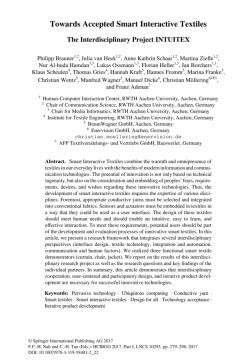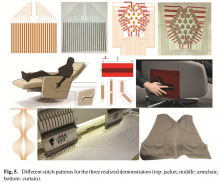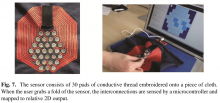
Abstract
Smart Interactive Textiles combine the warmth and omnipresence of textiles in our everyday lives with the benefits of modern information and communication technologies. The potential of innovation is not only based on technical ingenuity, but also on the consideration and embedding of peoples’ fears, requirements, desires, and wishes regarding these innovative technologies. Thus, the development of smart interactive textiles requires the expertise of various disciplines. Foremost, appropriate conductive yarns must be selected and integrated into conventional fabrics. Sensors and actuators must be embedded in textiles in a way that they could be used as a user interface. The design of these textiles should meet human needs and should enable an intuitive, easy to learn, and effective interaction. To meet these requirements, potential users should be part of the development and evaluation processes of innovative smart textiles. In this article, we present a research framework that integrates several interdisciplinary perspectives (interface design, textile technology, integration and automation, communication and human factors). We realized three functional smart textile demonstrators (curtain, chair, jacket). We report on the results of this interdisciplinary research project as well as the research questions and key findings of the individual partners. In summary, this article demonstrates that interdisciplinary cooperation, user-centered and participatory design, and iterative product development are necessary for successful innovative technologies.
Brauner P. et al. (2017) Towards Accepted Smart Interactive Textiles. In: Nah FH., Tan CH. (eds) HCI in Business, Government and Organizations. Interacting with Information Systems. HCIBGO 2017. Lecture Notes in Computer Science, vol 10293. Springer, Cham. https://doi.org/10.1007/978-3-319-58481-2_22
Related Project(s):





